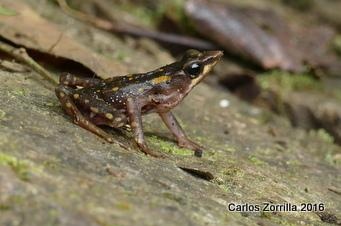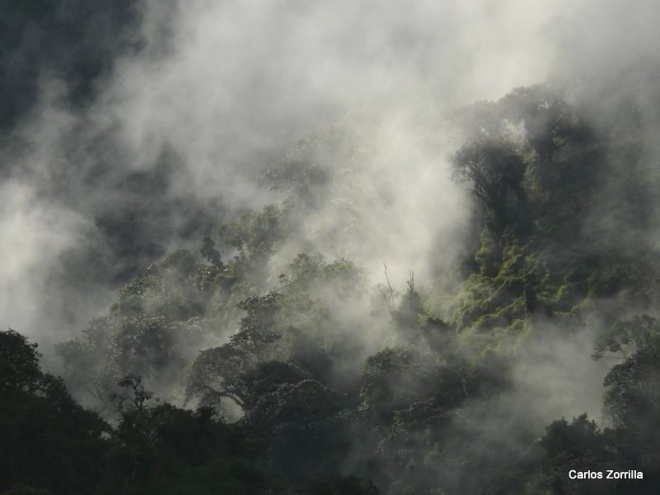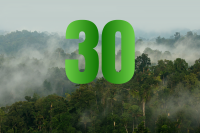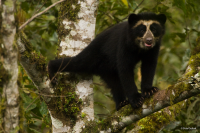From the outside looking in, it’s easy to get the impression that it’s a black-and-white struggle of two critically endangered frogs versus a massive transnational copper mining project. In part, you’d be right. But it’s much more than that.
It could be said that it all started in the 1980’s when a Belgian-government funded expedition discovered a potential mining site in Northwestern Ecuador on the flanks of the biodiverse Toisan Range, in an area known as Intag. In the following decade the Ecuadorian government asked the Japanese government’s support to assess the site’s true mining potential. Japan back then, as now, imports 100% of its copper. Just a coincidence no doubt. Thus, enter mining company number one, Bishimetals, a subsidiary of Mitsubishi Corporation. Bishimetal’s exploration was wholly financed by the Japanese government through the Japanese International Cooperation Agency; JICA. They drilled dozens of test wells deep into the subsoil right in the middle in of some of the most biodiverse and threatened tropical forests in the world. The mountainous cloud forests of northwest Ecuador harbor hundreds of species facing extinction; including the two frogs protagonist of this story. It was Bishimetal’s presence that triggered the creation of DECOIN, the region’s oldest environmental organization, and to date- the 26 year-old resistance to mining, the oldest in the country.
After 4 years of exploration, Bishimetals confirmed the site was promising for large-scale copper mining. In 1996, they published a preliminary environmental impact study for a small copper mine which predicted massive environmental and social impacts, including widescale deforestation, contamination of rivers with toxic heavy metals, and relocation of four communities. The following year, local communities reacted to the possible scenario by burning their mining camp to the ground. That was enough for Mitsubishi to abandon Intag and their copper dreams. In discovering the site’s mineral potential, Bishimetals also contaminated pristine rivers and streams with heavy metals that welled up with the underground aquifers intersected by the drilling. A quarter century later, some of the abandoned wells are still contaminating the area’s rivers and streams.
The World Bank and Mining Company Number Two
One of the least well-kept secrets in the world of underdevelopment is the Bank’s role in facilitating extractivism around the planet. They do this not only by lending billions to mining and petroleum companies, but, and more devastating still, by weaking mining and petroleum legislation in developing countries. They don’t do it so much anymore, but when they did, they helped finance the “modernizing” of mining legislation of over 100 developing countries. The objective was, from the Bank’s narrative, to help develop these countries’ economies. Never mind that those poor countries tend to suffer much worse economic and social outcomes when they depend on extraction of resources to drive their economies; a phenomenon known as the Natural Resource Curse.
In reality, “modernizing” mining legislation translated to radical de-regulating, thus making it cheaper and easier for transnational capital to extract resources from poor countries. Ecuador was one of those countries affected by the initiative. In our case, environmental safeguards were drastically weakened and a number of tax breaks instituted to attract mining investment. And it worked. The changes brought in a horde of mining companies to the country, including many shady Canadian ones. One of those would end up in our neck of the woods and would, unsuccessfully, try to continue where Bishimetals left off.
But before delving into the sordid history of Canadian Copper Mesa, a little bit more about the World Bank project that made it possible for the Canadian company, and others like it, to wreak social and environmental havoc in local communities. Prodeminca was the name the World Bank christened the so-called development project for Ecuador (it stands for Mining Development and Environmental Control Project). The project’s main objective was to open the country to mining. The Bank would do this not only by financing the de-regulation of the country’s mining legislation, but also by creating mineralogical maps highlighting the country’s promising mining areas, thus saving mining companies untold millions of dollars in exploration costs. The main region studied was Western Ecuador, where Intag and the Toisan Range are located. Importantly, the project, and contrary to World Bank guidelines, did not exclude from mineral exploration the nation’s national parks. If Ecuador is now plagued with hundreds of mining concessions and dozens of social conflicts it is in large part thanks to the World Bank and the Prodeminca project.
Copper Mesa
In Canada just about anyone can start a mining company. The country is known for having very lax regulations for creating and listing corporations on the nation’s stock exchanges. It is the main reason that most publicly-traded mining companies are based in the country. For decades, it has been the mecca for crooks who count on the lax regulation and oversight to fleece investors. Copper Mesa, formerly known as Ascendant Copper, is one of those corporations. The company was founded for the sole purpose of developing the Llurimagua mining concession, where the two endemic frogs live. Much more to this story is told in the documentary Under Rich Earth, but to cut to the chase, after five years of aggressively trying to develop the project, including the use of paramilitaries and an outrageous judicial set up, they had to abandon the project due to fierce community resistance. This was in 2009. In 2010, the Toronto Stock Exchange delisted the company from the Exchange. However, it took locals from Intag suing the Exchange for complicity in human rights violations to achieve it. Goodbye company number two.




